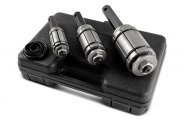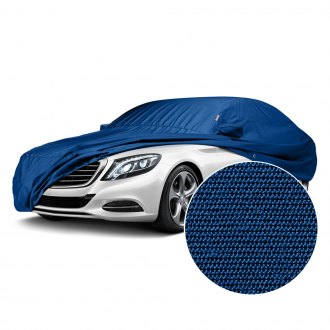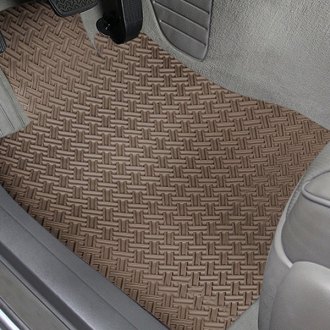MG Accessories & Parts
MG Parts
Universal Wheels & Tires
MG Exterior Accessories
 Body Kits
Body Kits Towing & Hitches
Towing & Hitches Headlights
Headlights Roof Racks
Roof Racks Car Covers
Car Covers Car Bras
Car Bras Light Covers
Light Covers Wiper Blades
Wiper Blades Running Boards
Running Boards Chrome Trim
Chrome Trim Off-Road Bumpers
Off-Road Bumpers Tail Lights
Tail Lights Spoilers
Spoilers Custom Hoods
Custom Hoods Fender Flares
Fender Flares Mirrors
Mirrors Bug Deflectors
Bug Deflectors License Plates & Frames
License Plates & Frames Winches
Winches Bike Racks
Bike Racks Mud Flaps
Mud Flaps Emblems & Logos
Emblems & Logos Sunroof Visors
Sunroof Visors Armor & Protection
Armor & Protection Car Wraps
Car Wraps Car Tents
Car Tents Spare Tire Covers & Carriers
Spare Tire Covers & Carriers Snow Plows
Snow Plows Custom Horns
Custom Horns Auto Detailing
Auto Detailing
MG Automotive Lighting
MG Body Parts
MG Interior Accessories
Universal Audio & Electronics
 Installation Parts
Installation Parts Stereos
Stereos Speakers
Speakers Amplifiers
Amplifiers Subwoofers
Subwoofers Cameras & Driver Safety
Cameras & Driver Safety Alarms & Remote Start
Alarms & Remote Start CB Radios & Components
CB Radios & Components Antennas & Components
Antennas & Components Mobile Phone Cables & Connectors
Mobile Phone Cables & Connectors Bluetooth
Bluetooth Equalizers & Processors
Equalizers & Processors Batteries & Power
Batteries & Power Video
Video Radar Detectors
Radar Detectors GPS Systems
GPS Systems Mounts & Chargers
Mounts & Chargers Action Cameras & Accessories
Action Cameras & Accessories
MG Automotive Tools
 Oil Change Tools
Oil Change Tools Spark Plug & Ignition Tools
Spark Plug & Ignition Tools Brake Service Tools
Brake Service Tools Suspension & Steering Service Tools
Suspension & Steering Service Tools Fuel System Service
Fuel System Service Pullers & Installers
Pullers & Installers Cooling System Service Tools
Cooling System Service Tools Repair Manuals
Repair Manuals Wheel & Tire Service Tools
Wheel & Tire Service Tools Engine Service Tools
Engine Service Tools Transmission & Drivetrain Service Tools
Transmission & Drivetrain Service Tools A/C Tools & Equipment
A/C Tools & Equipment Electrical System Tools
Electrical System Tools Diagnostic & Testing Tools
Diagnostic & Testing Tools Exhaust System Service Tools
Exhaust System Service Tools Auto Glass Tools
Auto Glass Tools Lockout Kits
Lockout Kits Jacks
Jacks Automotive Lifts & Stands
Automotive Lifts & Stands Automotive Paint
Automotive Paint EV Charging
EV Charging Battery Chargers & Jump Starters
Battery Chargers & Jump Starters Dollies & Movers
Dollies & Movers Creepers
Creepers Auto Detailing
Auto Detailing Key Cutting Machines
Key Cutting Machines Dent Repair Tools
Dent Repair Tools Service Carts
Service Carts Vehicle & Parts Protection
Vehicle & Parts Protection
Morris Motors was a prominent early 20th century British car manufacturer and builder of the Oxford and Cowley models, which in their heyday accounted for over 40% of British automobile production. In the early 1920s Cecil Kimber, the general manager of Morris Garages, a Morris Motors subsidiary and distributor, thought there might be a market for a sportier Morris. He put a custom 2-seat roadster body on a lowered Morris chassis, creating the Morris Garages “Chummy”, the direct ancestor of the MG sports car. The subsequent model 14/28, so named because of its taxable (14) and actual (28) horsepower rating, went on sale in 1924 as an MG. The name originated from the initials of Morris Garages. The first MGs had coachwork supplied by Carbodies from Coventry mounted on Morris’ chassis, but by 1928 the venture became a separate entity, MG Car Company Limited, and began constructing all MG cars.
The MG M-Type Midget was introduced in 1929 and remained in production until 1932, beginning a tradition of small, affordable 2-seat sports cars for which MG would become renowned. During the early 1930s, MG built a number of sports roadsters, and many of these cars distinguished themselves in competition. However, in 1935, William Morris, who had personally owned MG, sold the company to Morris Motors, and the change in management sent the company in a new direction. The racing program ended and there was a new emphasis on production cars and profitability. As a result, the first of the T-series cars was developed, which would result in a succession of famous 2-seat sports cars that would be produced into the 1950s. The MG TA, which was produced from 1936 to 1939, had a steel body mounted on a wood frame, with a 94” chassis that was equipped with solid axles and leaf springs front and rear. The 1.3L OHV in-line 4-cylinder engine sent its 50 hp through a 4-speed manual gearbox, and the car was capable of almost 80 mph. The car featured wire wheels, a folding windshield, and side curtains. The 1939 MG TB, which succeeded the TA, had a more modern 1.3L engine that produced 4 more horsepower.
During WWII, the MG factory produced aircraft parts and serviced guns and tanks. The MG TC debuted at war’s end in 1945. The new car was not radically different from its predecessors – the body was widened by 4”, but the mechanicals were basically the same. Although all TCs were right-hand drive, a substantial number were sold in the U.S. Many Americans had seen and driven small sports cars when they were stationed in England and Europe during the war and wanted them when they returned home. The ensuing model MG TD that was introduced in 1950 was designed to have greater appeal in the North American market. The beam front axle was dropped in favor of independent coil springs and wishbones, the rear leaf springs had more travel, rack and pinion steering was added, and smaller diameter, wider tires were used. The result was a car that rode and handled much better than its predecessors. The TD was manufactured in right-hand and left-hand drive, the body was widened and a radio and heater became optional. Almost 30,000 MG TDs were produced, with over 23,000 exported to the U.S.
In 1952 Morris Motors merged with the Austin Motor Company, creating British Motor Corporation (BMC). The next year the MG TF succeeded the TD. The TF was little more than a facelifted TD with a sloping grille and headlights that were faired into the fenders. In 1954 higher compression and an engine size increase to 1.5L raised horsepower to 63. Poor sales and increased competition from companies like Triumph and Austin-Healey forced MG to create an entirely new model for 1955. The much more modern MGA debuted at the Frankfurt Motor Show that year with a sleek body mounted on a chassis with independent coil spring/wishbone suspension in front and live axle with leaf springs in rear. Rack and pinion steering was standard and there was a choice of wire or steel wheels. Available as a coupe or roadster, the MGA was initially powered by a 1.5L 68 hp in-line 4-cylinder engine that was mated to a 4-speed gearbox. 1959 models received a larger 1.6L engine that produced 79 hp, along with front disc brakes, and engine size and horsepower were increased again for the 1960-62 Mark II models. A 108 hp DOHC 1.6L engine was available from 1958-1960, which gave the car a top speed of 113 mph and 0-60 mph time of 9.1 seconds.
The MGA was replaced by the MGB in 1962. The new car’s unibody construction, which made it lighter and stronger, was a major change from previous MGs. It was available as a roadster with wind-up windows and as a 2-door hatchback GT coupe from 1965 onward. Suspension continued to be independent coils in front with solid axle and leaf springs in rear, with rack and pinion steering and front disc brakes. The 1.8L OHV 4-cylinder engine was frequently revised during the car’s production run to improve performance or accommodate emissions requirements. The 4-speed manual transmission could be supplemented with overdrive. Significant variants included the MGC, which was equipped with a 3.0L in-line 6-cylinder engine, and the MGB GT V8, which was available from 1973 to 1976 and equipped with the Rover 3.5L aluminum V8 engine. Federal regulations exacted a toll on the MGB’s appearance and handling: The chrome bumpers were replaced with steel-reinforced black bumpers in 1974, and because the headlights were too low to meet new height standards, rather than redesign the front of the car the suspension was raised one inch. The MGB ended production in 1980 after over 500,000 had been manufactured.
From 1961 to 1980 a smaller, less expensive, 2-seat sports car was also produced called the MG Midget. The Midget was a virtual clone of the redesigned Austin-Healey Sprite that debuted in 1961, and differed mainly in trim and grille design. The Midget was powered by a 46 hp, 948cc in-line 4 cylinder engine and equipped with coil spring/wishbone front suspension and leaf springs with a live axle in the rear. The most significant changes to the Mark II model of 1964 were the addition of wind-up windows and external door handles, and a larger, 1.1L engine that increased horsepower to 59. Engine size was increased to 1.3L for the 1966 Mark III models, raising horsepower to 65, however this was reduced when compression was lowered in 1971. The final version of the Midget was the 1500 that was produced from 1974 to 1980. Like the MGB, the Midget 1500 was fitted with black plastic bumpers and the ride height was increased. A larger 1.5L engine helped to offset the reduced compression and emissions equipment.
BMC had merged with Leyland Motor Corporation in 1968 to form British Leyland (BL). Under BL, MG development languished and corporate politics and poor economic conditions resulted in the closing of the MG plant in 1980, and the end of MG production. While the MG brand lay dormant, BL was renamed the Rover Group in 1986, and subsequently purchased by British Aerospace before being sold to BMW in 1994. In 1995 the MG marque was revived with the MG F, a mid-engine rear wheel drive roadster powered by a 16-valve 1.8L engine, followed by a restyled and reengineered TF in 2002. Both cars were sold in the United Kingdom, with production of the TF ending in 2011. BMW sold the Rover Group, and the assets of the subsequently formed MG Rover Group were purchased by the Nanjing Automobile Group in 2005. In 2007 Nanjing Automobile Group merged with SAIC (Shanghai Automotive Industry Corporation), China’s largest automaker. Today the company markets a line of compact and subcompact sedans and hatchbacks under the MG brand in China and the UK.
MGs are the embodiment of the traditional English sports roadster. While some of the older T models can be rare and priced accordingly, cars like the MGB are one of the most affordable sporty collector cars. All MGs are fun to drive and with a conventional drivetrain of front OHV engine powering the rear wheels, they are relatively easy to work on. MGs are not so common that you see a lot of them on the road, and with such timeless looks they’re always head-turners. But they were produced in large enough quantities, especially the MGB, that there is usually an ample selection available for sale, so you can get the car that best suits your tastes and wallet. If you want to find MGs for sale, get purchasing advice, or any other information, there is a large network of clubs and Internet forums where owners and enthusiasts congregate. And whether you’re a long-time MG aficionado or contemplating getting in on the action, we can be a resource as well, with a full line of maintenance supplies, repair, parts, accessories, and appearance products to keep your MG running well and looking its best.
Dress your vehicle up. Keep it running at its peak or unleash its hidden power. Make it look like it just rolled off the show room floor. Take care of it and maintain it. You name it, we've got it. We have gathered everything you need to make your MG perfect both inside and out. CARiD's job is to meet your every expectation and provide you with quality and durable accessories and parts designed with excellence in mind. Whether you're after luxurious style, brisk performance, or anything in between, our wide assortment covers all the bases.
Featured Products
-

-
 $64.95 - $69.95
$64.95 - $69.95 -
 $316.99 - $336.99
$316.99 - $336.99 -

Popular Products
-
 $78.85 - $1,810.70
$78.85 - $1,810.70 -

















